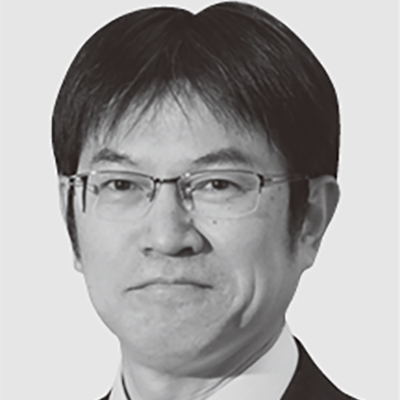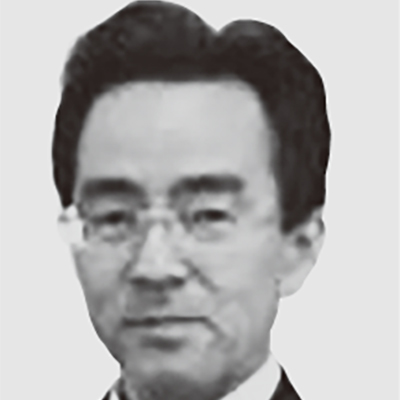1. The Digital Transformation Concept
Digital transformation (DX) is the concept that the spread of information technology (IT) will bring positive changes to all aspects of human life(1). This concept is essential, not only to basic IT applications such as data communication, recording, and processing, but also, in particular, to the close combination of data analysis and application technology (IT) with operational technology (OT) to create value that was previously unavailable.
2. Hitachi's IoT Platform for Accelerating DX: Lumada
Hitachi has accumulated and enhanced its OT and IT capabilities over many years, and has experience delivering diverse solutions for social infrastructure, corporate systems, and industrial systems that fully utilize these capabilities. From examples (representative use cases) of these DX solutions, Hitachi has identified “solution cores” and created models to enable universal use across a wide range of industries. Hitachi can quickly provide customers with digital solutions by applying these solution cores, and Hitachi's Internet of Things (IoT) platform Lumada makes it possible. Figure 1 shows the Lumada architecture. This architecture is the platform from which the solution cores are formed.
Figure 1—Lumada Architecture
 Lumada comprises a composable subsystem (edge, analytics, studio, core) and a foundry that supports it. Each component is centered on proven Hitachi technology, and also utilizes partner technology such as open-source software. The system can be constructed and supplied by freely combining various components according to the customer's environment.
Lumada comprises a composable subsystem (edge, analytics, studio, core) and a foundry that supports it. Each component is centered on proven Hitachi technology, and also utilizes partner technology such as open-source software. The system can be constructed and supplied by freely combining various components according to the customer's environment.
The following introduces the solution cores that the Research & Development Group (R&D Group), Hitachi, Ltd. is currently working on and supplying.
- (1) Optimized factory
- Hitachi has developed a solution, called the Lumada optimized factory, using technology that performs real-time identification and analysis of the overall supply chain status, including parts procurement, production, sales, logistics, installation, operation, and maintenance; predicts problems that may occur in the future; and automates the creation of preventive measures. This solution is provided to advanced customers both inside and outside the company, with examples including using video surveillance at a production plant for detecting abnormalities in real time to prevent defects in mass-produced goods, a high-precision production prediction system with artificial intelligence (AI) that performs incremental learning of manufacturing system sensing information, standard work hours, and yield trends to formulate appropriate measures, and inventory operation automation for large-scale supply chains that link tens of thousands of facilities.
- (2) Predictive maintenance
- Hitachi is developing technology that can predict failures from operation data in order to increase the utilization rate of advanced medical devices such as magnetic resonance imaging (MRI) systems and of critical systems and devices such as power generators. The AI is trained to learn what the normal operating conditions are and compares these conditions to the monitoring data, detecting minor abnormalities that are difficult for maintenance personnel to notice and enabling measures to be taken before a failure occurs. This makes maintenance work more efficient by reducing the need to replace parts and by simplifying and shortening maintenance work(2).
- (3) Public safety
- Hitachi has developed an integrated platform for the centralized collection, accumulation, and analysis of data for various physical security systems such as surveillance cameras and access control systems. The platform provides solutions for increasing the efficiency of crime prevention, accident prevention, and security operations, helping to ensure public safety and security. Based on information that can be used to identify people, such as facial photographs, clothes, and baggage, lost or suspicious persons inside a large facility can be identified from surveillance camera images, enabling high-speed searching of routes of travel and supporting the use of mobile devices to search for people. Security within a facility can be improved while spending less effort searching, which helps improve service for the relevant customers(3).
3. Innovative Technologies that Underpin DX
The following describes the innovative technologies that underpin the digital transformation being developed by the R&D Group.
- (1) AI
- AI development started by modeling the knowledge of specialists and applying it to optimization and deductive reasoning, and advanced to become an inductive type of machine learning that extracts feature values from data. In the future, Hitachi will combine these techniques to create a new integrated type of deductive and inductive AI. From the perspective of utilizing IT, it is important to develop and integrate existing systems more intelligently by combining physical space with cyberspace. The key technology for doing this is AI. The details will be described in an article later in this issue.
- (2) Sensing
- Digital sensing systems are being developed that create new value by converting field data obtained from sensors into valuable field information, analyzing on-site challenges in an IT space, and controlling field operations based on the results. For example, by obtaining and analyzing pipe vibration data from the sensors in a plant, it is possible to check the operating condition of the assets connected to the pipes. The R&D Group will continue to create new value with the IoT to meet a variety of societal needs by combining data collection and analysis with the control of various devices and assets(4).
- (3) Analysis-led design
- Multi-fidelity total integrated analysis technology is being developed that predicts the total performance of social infrastructure systems composed of multiple systems and assets that perform different roles. The technology enables batch analysis of the entire system by freely selecting and combining analysis models according to the required level of precision in predicted performance. When the developed technology was applied to predict the coefficient of performance (COP) of an air conditioner, the results confirmed that the analysis time was shortened from the usual time of around 2.5 days to around 10 min, while the prediction error of COP change improved from the previous figure of about 3% to less than 1%(5).
- (4) Reliability design
- The R&D Group is developing technology that clearly identifies the operating environment, workload, and structural reliability of systems and assets from actual operating information for use in enhancing reliability design. If the failure risk obtained by multiplying the failure probability by the cost of failure is used as an indicator of reliability, then reliability can be evaluated from an economic perspective. In addition, this makes it possible to increase the reliability of entire mechanical systems throughout the entire product lifecycle, from design to operation and maintenance. An analytics platform that performs online collection of actual operation data from wind power generation systems and analyzes the failure risk commenced operation in 2016(6).
- (5) Symbiotic autonomous decentralization
- The R&D Group is further developing the concept of symbiotic autonomous decentralization, which not only optimizes field devices and assets, but also shares and analyzes information up to the executive level, optimizing the entire company or enterprise, and even optimizes and creates value for the entire value chain, including the related external companies. By constructing a platform that links different systems and shares value, social infrastructure and industrial systems can be enhanced even more(7).
4. Collaborative Creation with Customers
For this technology innovation, it is essential to explore the complex societal challenges in this era of uncertainty together with customers and business partners. To achieve this, as described at the beginning of this issue, Hitachi has established five open laboratories at the Yokohama Research Laboratory that perform prototyping jointly with customers utilizing Hitachi's cutting-edge technologies. Hitachi hopes its customers will use these facilities as spaces for joint development.
5. Conclusions
This article has described one part of Hitachi's technology development for accelerating digital transformation.
Hitachi will continue to utilize its IoT platform Lumada to quickly supply its customers with optimal solutions. And, the Center for Technology Innovation will continue to take the lead in developing the innovative technologies required for these solutions as the technology platform of the Hitachi Group.
REFERENCES
- 1)
- E. Stolterman et al., “Information Technology and the Good Life,” Umeå University (2004).
- 2)
- T. Moritsu et al., “O&M Service for Sustainable Social Infrastructure,” Hitachi Review, 62, pp. 370–375 (Sep. 2013).
- 3)
- S. Hatakeyama et al., “PSS Integrated Platform with Convenience, Functionality, and Scalability,” Hitachi Industry & Control Solutions, Ltd. Technical Review, Vol. 2, pp. 8–13 (Jan. 2017) in Japanese.
- 4)
- T. Oshima et al., “Digital Sensing Technology for Visualizing Sites,” Hitachi Review, 65, pp. 445–449 (Nov. 2016).
- 5)
- “Multi-fidelity Total Integrated Analysis Technologies to Predict Total Product System Performance,” Hitachi Technology, 66 (Mar. 2017).
- 6)
- N. Takeda et al., “Using Operation Information in Reliability Design and Maintenance: Analytics for the IoT Era,” Hitachi Review, 65, pp. 450–455 (Nov. 2016).
- 7)
- “Symbiotic Autonomous Decentralized Platforms for Faster Fusion of Control and Information,” Hitachi Review, 65, pp. 9–12 (Jun. 2016).



 Lumada comprises a composable subsystem (edge, analytics, studio, core) and a foundry that supports it. Each component is centered on proven Hitachi technology, and also utilizes partner technology such as open-source software. The system can be constructed and supplied by freely combining various components according to the customer's environment.
Lumada comprises a composable subsystem (edge, analytics, studio, core) and a foundry that supports it. Each component is centered on proven Hitachi technology, and also utilizes partner technology such as open-source software. The system can be constructed and supplied by freely combining various components according to the customer's environment.